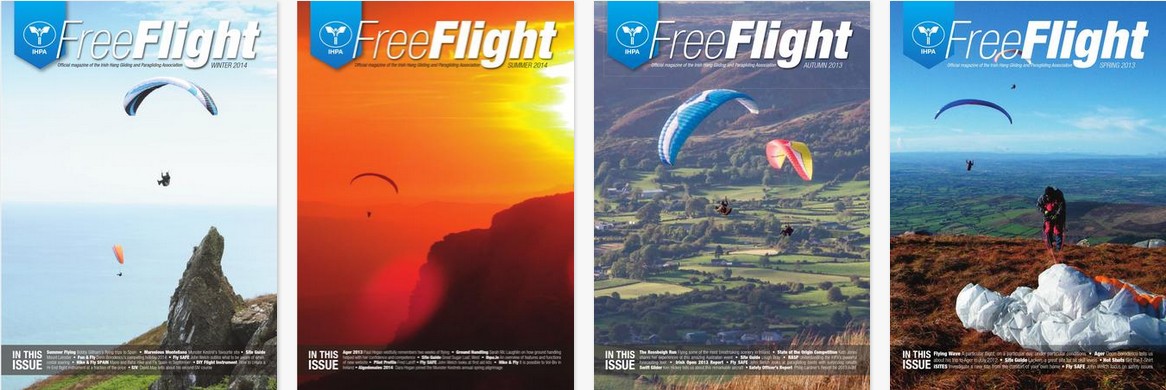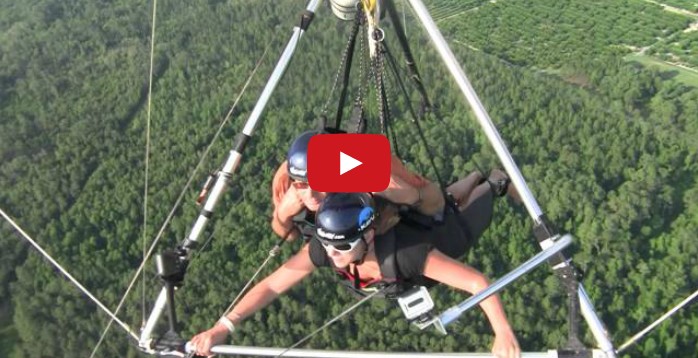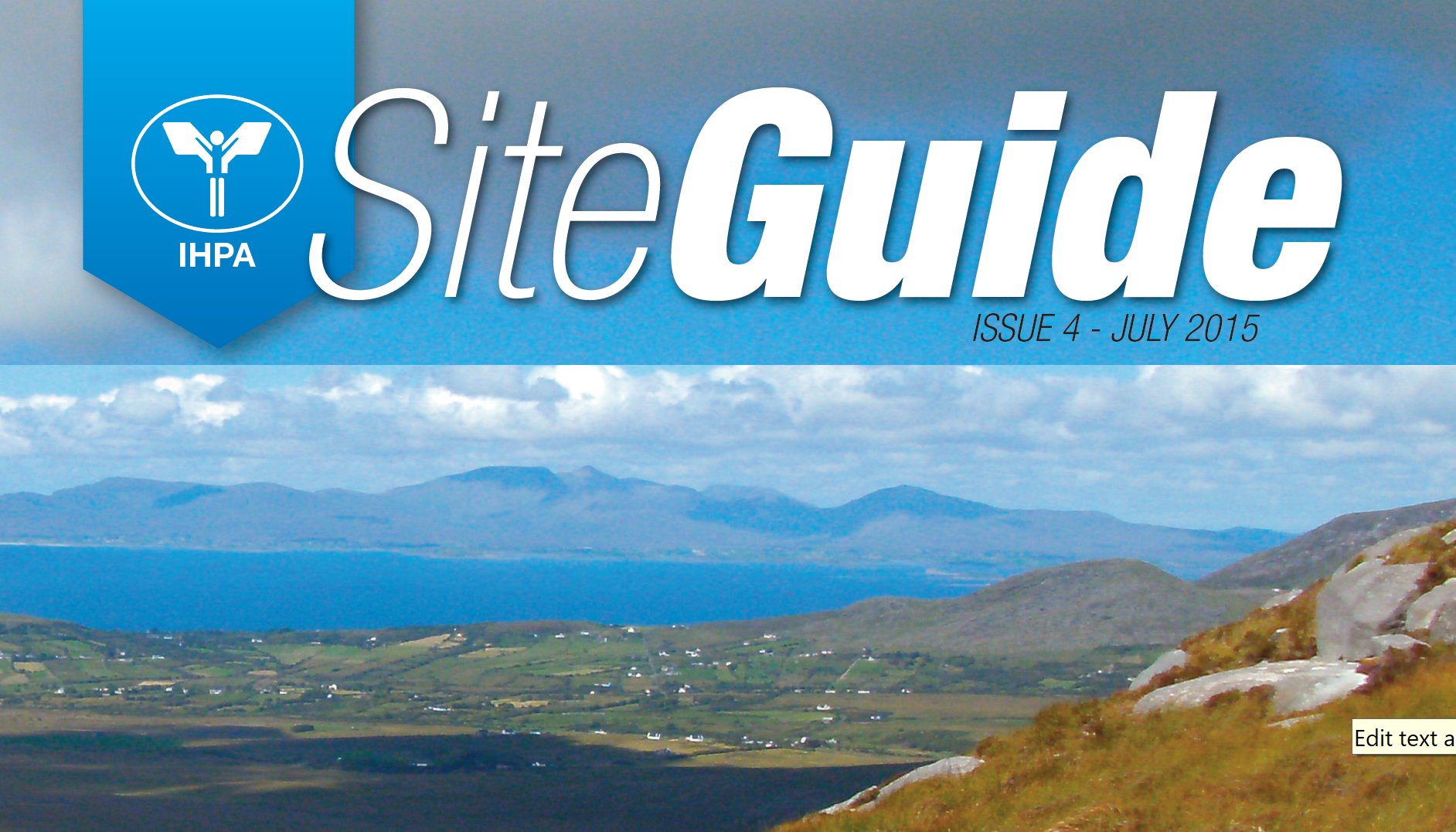Killiney
Killiney (Co. Dublin)
This coastal site has a difficult launch (for both PG and HG) facing directly out to sea. The landing zone is on Killiney beach, some kilometres to the right of take off, and can be very narrow when the tide is in. Landing on the beach must sometimes be accomplished in a cross-wind whilst avoiding large numbers of other beach users. Please also note that Killiney is inside the Dublin Air Traffic Controll Zone. Pilots wishing to fly here MUST contact Dublin ATC on 01 8144601 and ask for the Data Assistant before and after flying. This site may ONLY be flown by current members of the IHPA or by visitors and guests flying in the company of an IHPA member. This specific condition was stipulated by Dublin ATC when permission was first granted to fly sites inside Dublin airspace.
Bray Head
Bray Head (Co. Wicklow)
This coastal site faces directly out to sea and has no easy bottom landing area within easy reach. Pilots are required to either top-land or fly several kilometres towards Bray beach or Greystones to bottom land. Landing at Bray beach will always be in a cross-wind and on a busy, narrow strip that is bounded by power lines and flag poles. Greystones beach is very narrow at the best of times and slopes steeply towards the sea. The fields above the beach are small and steeply sloped. It is possible to be caught out if the wind changes direction or switches off while you are somewhere half-way along Bray Head and not be able to make either of the bottom landing areas or to top-land. Your only option then is to slope-land (down-wind) or end up in the sea.
Mt. Leinster SE
Mt. Leinster (Co. Wexford/Carlow) - South-East bowl
Whilst all the other flying sites on Mt. Leinster are relatively safe and easy, the SE-bowl presents a different set of dangers. There is no easy landing area directly out in front of take-off (only small up-slope / cross-wind paddocks) and pilots must fly over a ridge and around the side of the mountain to be able to land in the Diamond field. It is very easy to get dumped when the wind drops and be unable to get over the ridge between the bowl and the Diamond field. The emergency LZ is unpleasant to say the least. Another danger arises at this site when there is a low-level high-pressure inversion layer present. Winds blowing from the SE are prevented from blowing up the slope of the mountain by the inversion layer and are instead funneled through the Scullogue Gap to form violently changing winds and vortices in the area of the Diamond field. There have been a number of near-fatal incidents in these conditions with very strong winds below the inversion layer changing direction by 180 degrees in seconds, despite there being no wind at take-off. Do not fly the SE-bowl when there is a low-level high-pressure inversion layer.
Skerries
Skerries (Co. Dublin)
This coastal site has a tricky launch (backing on to a main road, then power lines, then a railway line) and does not have any safe landing area directly out in front unless the tide is fully out. A pilot, flying at take-off height was turned towards the hill and impacted a low wall. His leg was nearly severed. There is a significant danger at this site of flying too far back when top-landing and into the path of traffic on the road. Also, this site must not be flown by more than four or five pilots at any one time as the area of lift can be very short and narrow depending on the wind strength and direction. Under no circumstances should pilots perform radical or high-energy manoeuvres or wing-overs at this site.
Kinsale
Kinsale (Co. Cork)
All flying sites in and around Kinsale harbour (including the Old Head) are hazardous coastal launches with no easy or safe bottom landing areas. Pilots wishing to fly any of these sites MUST contact Cork Tower on (021) 4329623 and ask for permission to fly as this area is inside airspace controlled by Cork ATC.
Lough Bray
Put this number in your mobile phone now!
WMNP Duty Ranger: 087 980 3899
Lough Bray is part of the Wicklow Mountains National Park. The WMNP Authority requires all sporting activities taking place within the park to be approved and subject to conditions covered in their Permit, below. The short version is this:
- NO FLYING IS PERMITTED during the Peregrine falcon's breeding season (1st March - 31st July) unless the breeding cycle has failed for the year. The IHPA will keep pilots informed of this.
- All pilots flying at Lough Bray must be current, insured members of the IHPA or students within an approved training school.
- Pilots must call the WMNP Duty Ranger on 087 980 3899 and leave a voicemail saying that they will be flying at Lough Bray BEFORE flying.
- Click >here< to download and read a copy of the current WMNP Permit to Fly.
Achill Island
Achill - No Fly Zone!
Please DO NOT FLY the South or SSW slopes of Minaun Mt.

As many of you will be aware, we have been experiencing difficulties with one of the sheep farmers who ownes grazing rights on the South-West and South faces of Minaun Mt. on Achill. We have always tried to work with this difficult individual in the past and have managed to calm him down, but this year we were greeted with lots of 'No Gliders' signs all the way up the mountain road to the summit of Minaun.
This year (2016), while waiting to launch on the SE side of the mountain, one pilot was stopped from launching by a Garda officer who had been called in by the farmer. To cut a long story short, we reached a compromise with the farmer, who was demanding that no part of the mountain be flown. Using the Garda (armed with a bottle of whiskey) as a go-between, it was agreed, for now at least, that the South and SSW faces of the mountain, where the farmer grazes his sheep, would not be flown by paragliders or hang gliders.
His main grief is that we are scaring his sheep down from along the mountain road up to the summit, where he wants them, and onto or accross the road at the bottom of the mountain where he claims they are in danger from cars.
The IHPA is therefore asking all pilots to please respect the farmer's wishes (until such time as a better solution can be reached) and NOT FLY the South or SSE facing ridge EAST of the river gulley running down from the top of the mountain.
All other parts of the mountain (including the main South-East face) may still be flown. The No Fly Zone is marked on the accompanying maps.
The IHPA will continue to try to improve on this situation by talking to the local County Council and the Achill Tourist Office, but given the rather intractable nature of the farmer concerned, we may have to play the long game!
If any pilots experience any difficulties with this farmer while trying to fly any of the other parts of the mountain, then please let the IHPA committee know and we will speak to the local Garda.
Thanks,
IHPA Committee (2016)










